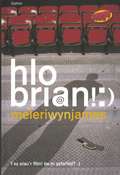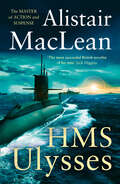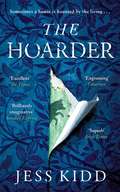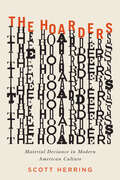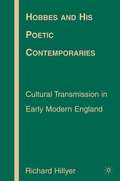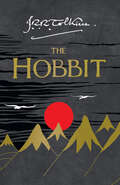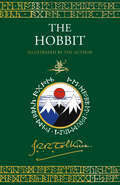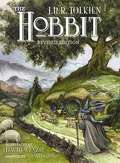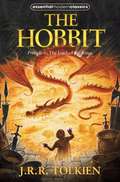- Table View
- List View
The Hive Construct
by Alexander MaskillSituated deep in the Sahara Desert, New Cairo is a city built on technology – from the huge, life-giving solar panels that keep it functioning in a radically changed, resource-scarce world to the artificial implants that have become the answer to all and any of mankind's medical problems. But it is also a divided city, dominated by a handful of omnipotent corporate dynasties. And when a devastating new computer virus begins to spread through the poorest districts, shutting down the life-giving implants that enable so many to survive, the city begins to slide into the anarchy of violent class struggle. Hiding amidst the chaos is Zala Ulora. A gifted hacker and fugitive from justice, she believes she might be able to earn her life back by tracing the virus to its source and destroying it before it destroys the city. Or before the city destroys itself . . .With its vivid characters, bold ideas and explosive action, The Hive is science fiction at its most exciting, inventive and accessible.
Hive Invasion
by James AxlerSeeking refuge in a post-Armageddon America, Ryan Cawdor and his crew of misfits travel together for survival and sanity. Known as Deathlands, this lawless hellscape is defined by destruction, death and despair.
A Hive of Glass (Murder Room Ser.)
by P. M. HubbardJohnnie Slade harbours an obsessive love for fine glass objects, so his interest is piqued when he sees photographs of the fabulous Verzelini tazza in a magazine. He follows its trail and finds that someone may already have committed murder to get their hands on it. If, indeed, it ever existed. And what is the relevance of the entry in the dead man's diary that reads 'Dunstreet'?Johnnie finds out what it means - and he also finds Claudia. But his pursuit of both the tazza and the girl are complicated not only by Claudia's blind and autocratic Aunt Elizabeth, but also by the dawning realisation that he is not alone in his quest. And death, of course, is just around the corner.
Hlo Brian! (Cyfres Whap!)
by Meleri JamesNofel ddigri mewn diwyg cyffrous gyda ffurfiau tecst ac e-bost yn britho'r testun. Mae Brian wedi cael gafael ar ffôn chwaraewr pêl-droed enwog - a ddylai ei ddychwelyd ai peidio? [An amusing novel in an exciting form with text and e-mail messages throughout. Brian has got hold of a famous footballer's mobile phone - should he return it or not?] *Datganiad hawlfraint Gwneir y copi hwn dan dermau Rheoliadau (Anabledd) Hawlfraint a Hawliau mewn Perfformiadau 2014 i'w ddefnyddio gan berson sy'n anabl o ran print yn unig. Oni chaniateir gan gyfraith, ni ellir ei gopïo ymhellach, na'i roi i unrhyw berson arall, heb ganiatâd.
Hms Crusader
by A E LangsfordDeath by fire - Death by ice. These were the twin threats confronting the seamen on the North Atlantic convoys: fire from the Luftwaffe's bombs, and from the torpedoes of the lurking U-Boats: ice in the deadly cold waters that could kill in three minutes, five minutes at most.Between these two hells lived another threat: the slow paralyzing hand of fear.
Hms Inflexible
by A E Langsford1945. The naval war in the Pacific is raging when Captain Thurston VC resists an office job to take command of HMS Inflexible, a proud and powerful aircraft carrier.It is no easy task. The overwhelming determination of the Japanese fighters and the cruel weather conditions make Thurston's command fraught with difficulties. But the struggle to provide air support for the US and Commonwealth troops must continue.Home is on the other side of the world, barely a reality, and Thurston finds that he is striving to do the right thing, not only as the Captain of the Inflexible but also in his private life. For a while he and his men are under daily attack from a deadly enemy, Thurston is plagued by feelings of guilt and remorse for the woman he has left behind.A. E. Langford's third compelling naval adventure is an evocative account of life at sea during one of the most perilous and hard-fought battles of this century.
Hms Marathon
by A E Langsford1942: The Mediterranean Operation Stonehenge gets under way - a convoy laden with desperately needed fuel, food and ammunition for the besieged island of Malta sets sail. Captain Robert Thurston commands the cruiser HMS Marathon, one of the escort vessels on this Malta run. Thurston is a career officer with a record of conspicuous gallantry under fire, from Jutland to the North Atlantic convoys. But he is also a man under stress - in the last three years he has seen one ship go to the bottom, leaving pitifully few survivors; he has seen his closest friends and shipmates killed and maimed; he has carried the impossibly heavy burden of responsibility for his men's welfare in the bloody destruction of war at sea. And soon another cause for concern is added to his worries - Marathon is crippled by enemy action and forced to limp towards Alexandria, a constant target for attack by sea and air, vulnerable to the weather and to the enemy alike. Men and machines are stretched to their limit - but the most deadly threat to Thurston's own life and career is yet to be faced.
HMS Surprise: Aubrey/maturin Series, Book 3 (Aubrey/Maturin Series #3)
by Patrick O’BrianPatrick O’Brian’s Aubrey-Maturin tales are widely acknowledged to be the greatest series of historical novels ever written.
HMS Ulysses
by Alistair MacLeanThe novel that launched the astonishing career of one of the 20th century’s greatest writers of action and suspense – an acclaimed classic of heroism and the sea in World War II. Now reissued in a new cover style.
HMS Unseen: a horribly compelling and devastatingly gripping action thriller - one hell of a ride…
by Patrick RobinsonThe deadliest ship in the world has fallen into the hands of a terrorist enemy -- the submariner believed to be behind the destruction of the Thomas Jefferson has returned to seek his revenge on his Iraqi paymasters and the country that betrayed him. He defects to Iran, where he is helped in his plan to transform a stolen submarine into a unique weapon capable of causing the most shocking air strikes in an American history. His vengeance on the US is devastating, H. M. S. Unseen is lost, and the blame appears to lie with Iraq. It is up to Admiral Arnold Morgan, to prove his suspicions that Iraq isn't responsible, and that Ben Adnam is the only man skilful enough to orchestrate such an attack. And he must stop him, whatever the cost ...
The Ho Ho Ho Mystery (Third Pig Detective Agency #2)
by Bob BurkeThe festive follow-up to The Third Pig Detective Agency.
The Hoarder
by Jess KiddA BBC RADIO 2 BOOK CLUB CHOICE SHORTLISTED FOR THE KERRY GROUP IRISH NOVEL OF THE YEAR AWARD LONGLISTED FOR THE INTERNATIONAL DUBLIN LITERARY AWARD Unintentional psychic Maud Drennan arrives to look after Cathal Flood, a belligerent man hiding in his filthy, cat-filled home. Her job is simple: clear the rubbish, take care of the patient. But the once-grand house has more to reveal than simply its rooms. There is a secret here, and whether she likes it or not, Maud may be the one to finally uncover what has previously been kept hidden . . . * In the US, this book is published under the title Mr Flood's Last Resort
The Hoarders: Material Deviance in Modern American Culture
by Scott HerringThe verb “declutter” has not yet made it into the Oxford English Dictionary, but its ever-increasing usage suggests that it’s only a matter of time. Articles containing tips and tricks on how to get organized cover magazine pages and pop up in TV programs and commercials, while clutter professionals and specialists referred to as “clutterologists” are just a phone call away. Everywhere the sentiment is the same: clutter is bad. In The Hoarders, Scott Herring provides an in-depth examination of how modern hoarders came into being, from their onset in the late 1930s to the present day. He finds that both the idea of organization and the role of the clutterologist are deeply ingrained in our culture, and that there is a fine line between clutter and deviance in America. Herring introduces us to Jill, whose countertops are piled high with decaying food and whose cabinets are overrun with purchases, while the fly strips hanging from her ceiling are arguably more fly than strip. When Jill spots a decomposing pumpkin about to be jettisoned, she stops, seeing in the rotting, squalid vegetable a special treasure. “I’ve never seen one quite like this before,” she says, and looks to see if any seeds remain. It is from moments like these that Herring builds his questions: What counts as an acceptable material life—and who decides? Is hoarding some sort of inherent deviation of the mind, or a recent historical phenomenon grounded in changing material cultures? Herring opts for the latter, explaining that hoarders attract attention not because they are mentally ill but because they challenge normal modes of material relations. Piled high with detailed and, at times, disturbing descriptions of uncleanliness, The Hoarders delivers a sweeping and fascinating history of hoarding that will cause us all to reconsider how we view these accumulators of clutter.
The Hoarders: Material Deviance in Modern American Culture
by Scott HerringThe verb “declutter” has not yet made it into the Oxford English Dictionary, but its ever-increasing usage suggests that it’s only a matter of time. Articles containing tips and tricks on how to get organized cover magazine pages and pop up in TV programs and commercials, while clutter professionals and specialists referred to as “clutterologists” are just a phone call away. Everywhere the sentiment is the same: clutter is bad. In The Hoarders, Scott Herring provides an in-depth examination of how modern hoarders came into being, from their onset in the late 1930s to the present day. He finds that both the idea of organization and the role of the clutterologist are deeply ingrained in our culture, and that there is a fine line between clutter and deviance in America. Herring introduces us to Jill, whose countertops are piled high with decaying food and whose cabinets are overrun with purchases, while the fly strips hanging from her ceiling are arguably more fly than strip. When Jill spots a decomposing pumpkin about to be jettisoned, she stops, seeing in the rotting, squalid vegetable a special treasure. “I’ve never seen one quite like this before,” she says, and looks to see if any seeds remain. It is from moments like these that Herring builds his questions: What counts as an acceptable material life—and who decides? Is hoarding some sort of inherent deviation of the mind, or a recent historical phenomenon grounded in changing material cultures? Herring opts for the latter, explaining that hoarders attract attention not because they are mentally ill but because they challenge normal modes of material relations. Piled high with detailed and, at times, disturbing descriptions of uncleanliness, The Hoarders delivers a sweeping and fascinating history of hoarding that will cause us all to reconsider how we view these accumulators of clutter.
The Hoarders: Material Deviance in Modern American Culture
by Scott HerringThe verb “declutter” has not yet made it into the Oxford English Dictionary, but its ever-increasing usage suggests that it’s only a matter of time. Articles containing tips and tricks on how to get organized cover magazine pages and pop up in TV programs and commercials, while clutter professionals and specialists referred to as “clutterologists” are just a phone call away. Everywhere the sentiment is the same: clutter is bad. In The Hoarders, Scott Herring provides an in-depth examination of how modern hoarders came into being, from their onset in the late 1930s to the present day. He finds that both the idea of organization and the role of the clutterologist are deeply ingrained in our culture, and that there is a fine line between clutter and deviance in America. Herring introduces us to Jill, whose countertops are piled high with decaying food and whose cabinets are overrun with purchases, while the fly strips hanging from her ceiling are arguably more fly than strip. When Jill spots a decomposing pumpkin about to be jettisoned, she stops, seeing in the rotting, squalid vegetable a special treasure. “I’ve never seen one quite like this before,” she says, and looks to see if any seeds remain. It is from moments like these that Herring builds his questions: What counts as an acceptable material life—and who decides? Is hoarding some sort of inherent deviation of the mind, or a recent historical phenomenon grounded in changing material cultures? Herring opts for the latter, explaining that hoarders attract attention not because they are mentally ill but because they challenge normal modes of material relations. Piled high with detailed and, at times, disturbing descriptions of uncleanliness, The Hoarders delivers a sweeping and fascinating history of hoarding that will cause us all to reconsider how we view these accumulators of clutter.
The Hoarders: Material Deviance in Modern American Culture
by Scott HerringThe verb “declutter” has not yet made it into the Oxford English Dictionary, but its ever-increasing usage suggests that it’s only a matter of time. Articles containing tips and tricks on how to get organized cover magazine pages and pop up in TV programs and commercials, while clutter professionals and specialists referred to as “clutterologists” are just a phone call away. Everywhere the sentiment is the same: clutter is bad. In The Hoarders, Scott Herring provides an in-depth examination of how modern hoarders came into being, from their onset in the late 1930s to the present day. He finds that both the idea of organization and the role of the clutterologist are deeply ingrained in our culture, and that there is a fine line between clutter and deviance in America. Herring introduces us to Jill, whose countertops are piled high with decaying food and whose cabinets are overrun with purchases, while the fly strips hanging from her ceiling are arguably more fly than strip. When Jill spots a decomposing pumpkin about to be jettisoned, she stops, seeing in the rotting, squalid vegetable a special treasure. “I’ve never seen one quite like this before,” she says, and looks to see if any seeds remain. It is from moments like these that Herring builds his questions: What counts as an acceptable material life—and who decides? Is hoarding some sort of inherent deviation of the mind, or a recent historical phenomenon grounded in changing material cultures? Herring opts for the latter, explaining that hoarders attract attention not because they are mentally ill but because they challenge normal modes of material relations. Piled high with detailed and, at times, disturbing descriptions of uncleanliness, The Hoarders delivers a sweeping and fascinating history of hoarding that will cause us all to reconsider how we view these accumulators of clutter.
The Hoarders: Material Deviance in Modern American Culture
by Scott HerringThe verb “declutter” has not yet made it into the Oxford English Dictionary, but its ever-increasing usage suggests that it’s only a matter of time. Articles containing tips and tricks on how to get organized cover magazine pages and pop up in TV programs and commercials, while clutter professionals and specialists referred to as “clutterologists” are just a phone call away. Everywhere the sentiment is the same: clutter is bad. In The Hoarders, Scott Herring provides an in-depth examination of how modern hoarders came into being, from their onset in the late 1930s to the present day. He finds that both the idea of organization and the role of the clutterologist are deeply ingrained in our culture, and that there is a fine line between clutter and deviance in America. Herring introduces us to Jill, whose countertops are piled high with decaying food and whose cabinets are overrun with purchases, while the fly strips hanging from her ceiling are arguably more fly than strip. When Jill spots a decomposing pumpkin about to be jettisoned, she stops, seeing in the rotting, squalid vegetable a special treasure. “I’ve never seen one quite like this before,” she says, and looks to see if any seeds remain. It is from moments like these that Herring builds his questions: What counts as an acceptable material life—and who decides? Is hoarding some sort of inherent deviation of the mind, or a recent historical phenomenon grounded in changing material cultures? Herring opts for the latter, explaining that hoarders attract attention not because they are mentally ill but because they challenge normal modes of material relations. Piled high with detailed and, at times, disturbing descriptions of uncleanliness, The Hoarders delivers a sweeping and fascinating history of hoarding that will cause us all to reconsider how we view these accumulators of clutter.
The Hoarders: Material Deviance in Modern American Culture
by Scott HerringThe verb “declutter” has not yet made it into the Oxford English Dictionary, but its ever-increasing usage suggests that it’s only a matter of time. Articles containing tips and tricks on how to get organized cover magazine pages and pop up in TV programs and commercials, while clutter professionals and specialists referred to as “clutterologists” are just a phone call away. Everywhere the sentiment is the same: clutter is bad. In The Hoarders, Scott Herring provides an in-depth examination of how modern hoarders came into being, from their onset in the late 1930s to the present day. He finds that both the idea of organization and the role of the clutterologist are deeply ingrained in our culture, and that there is a fine line between clutter and deviance in America. Herring introduces us to Jill, whose countertops are piled high with decaying food and whose cabinets are overrun with purchases, while the fly strips hanging from her ceiling are arguably more fly than strip. When Jill spots a decomposing pumpkin about to be jettisoned, she stops, seeing in the rotting, squalid vegetable a special treasure. “I’ve never seen one quite like this before,” she says, and looks to see if any seeds remain. It is from moments like these that Herring builds his questions: What counts as an acceptable material life—and who decides? Is hoarding some sort of inherent deviation of the mind, or a recent historical phenomenon grounded in changing material cultures? Herring opts for the latter, explaining that hoarders attract attention not because they are mentally ill but because they challenge normal modes of material relations. Piled high with detailed and, at times, disturbing descriptions of uncleanliness, The Hoarders delivers a sweeping and fascinating history of hoarding that will cause us all to reconsider how we view these accumulators of clutter.
Hobbes and His Poetic Contemporaries: Cultural Transmission in Early Modern England
by R. HillyerRanging from Jonson to Rochester and including several critically neglected figures, select poetic contemporaries variously illuminate the scope of Hobbes's writing and the reach of his influence, in turn shedding diverse lights on the nature of their own work.
The Hobbit: Illustrated By Alan Lee
by J. R. TolkienFirst ever illustrated eBook of the classic bestseller featuring more than 60 colour paintings and pencil drawings by the award-winning artist, Alan Lee, Conceptual Designer on Peter Jackson’s THE HOBBIT: AN UNEXPECTED JOURNEY.
The Hobbit: The Desolation Of Smaug Chronicles - Art And Design (The\hobbit: The Desolation Of Smaug Ser.)
by J. R. TolkienRead the definitive edition of Bilbo Baggins’ adventures in middle-earth in this classic bestseller behind this year’s biggest movie.
The Hobbit: Illustrated By The Author
by J. R. TolkienFor the first time ever, a special enhanced edition of the enchanting prelude to The Lord of the Rings, illustrated throughout with 50 sketches, drawings, paintings and maps by J.R.R. Tolkien himself.
The Hobbit: Graphic Novel Edition (PDF)
by J. R. R. Tolkien Charles Dixon Sean Deming David WenzelA brand new revised edition of the best-selling graphic novel based on the enchanting prelude to The Lord of the Rings. First published in 1990, David Wenzel’s comic book adaptation of J.R.R. Tolkien’s The Hobbit was an immediate success and has become one of the best-loved graphic novels of the last 25 years.
The Hobbit Companion
by David DayExploring the brilliant web of verbal hocus-pocus that J.R.R. Tolkien delightedly spun in The Hobbit and The Lord of the Rings, master hobbit investigator David Day reveals the myriad crafty puns and riddles, hidden meanings, and mythical associations beneath the saga's thrilling surface.
The Hobbit, or, There and Back Again (PDF)
by J. R. R. TolkienThe Hobbit is the unforgettable story of Bilbo, a peace-loving hobbit, who embarks on a strange and magical adventure. A timeless classic. Bilbo Baggins enjoys a quiet and contented life, with no desire to travel far from the comforts of home; then one day the wizard Gandalf and a band of dwarves arrive unexpectedly and enlist his services - as a burglar - on a dangerous expedition to raid the treasure-hoard of Smaug the dragon. Bilbo's life is never to be the same again. Seldom has any book been so widely read and loved as J.R.R. Tolkien's classic tale, 'The Hobbit'. Since its first publication in 1937 it has remained in print to delight each new generation of readers all over the world, and its hero, Bilbo Baggins, has taken his place among the ranks of the immortals of fiction.



